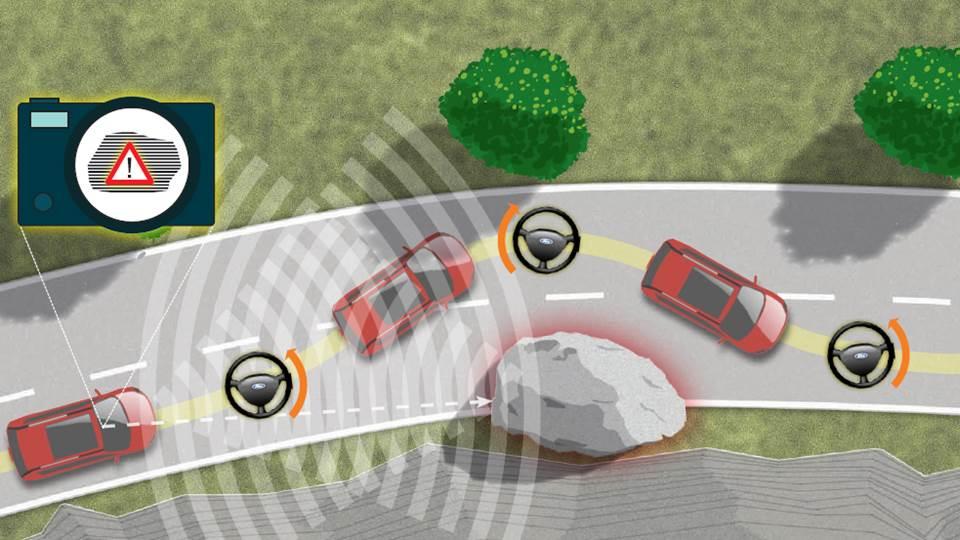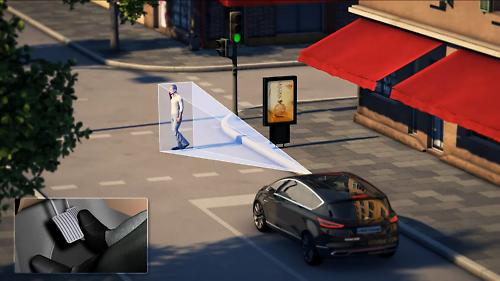- News
- Reviews
- Bikes
- Components
- Bar tape & grips
- Bottom brackets
- Brake & gear cables
- Brake & STI levers
- Brake pads & spares
- Brakes
- Cassettes & freewheels
- Chains
- Chainsets & chainrings
- Derailleurs - front
- Derailleurs - rear
- Forks
- Gear levers & shifters
- Groupsets
- Handlebars & extensions
- Headsets
- Hubs
- Inner tubes
- Pedals
- Quick releases & skewers
- Saddles
- Seatposts
- Stems
- Wheels
- Tyres
- Tubeless valves
- Accessories
- Accessories - misc
- Computer mounts
- Bags
- Bar ends
- Bike bags & cases
- Bottle cages
- Bottles
- Cameras
- Car racks
- Child seats
- Computers
- Glasses
- GPS units
- Helmets
- Lights - front
- Lights - rear
- Lights - sets
- Locks
- Mirrors
- Mudguards
- Racks
- Pumps & CO2 inflators
- Puncture kits
- Reflectives
- Smart watches
- Stands and racks
- Trailers
- Clothing
- Health, fitness and nutrition
- Tools and workshop
- Miscellaneous
- Buyers Guides
- Features
- Forum
- Recommends
- Podcast
news
 Ford_obstacleAvoidance_01
Ford_obstacleAvoidance_01Video: Experimental Ford takes over if driver fails to avoid a crash
Car maker Ford is working on a system that takes control of the car if it detects an obstacle in the road ahead, and either brakes or steers the car around it.
The Obstacle Avoidance system will first warn the driver of an impending collision, and then take over if they don’t react.
The system uses radar, ultrasonic sensors and a camera to scan the road up to 200m ahead. A display in the car warns the driver and if necessary puts on the brakes, looks for space on the road ahead and steers around the obstacle.
Here's Ford's video demonstrating how it works.
"You're driving down the road and a pedestrian or something comes out from either side of your vehicle from your peripheral vision where you don't have a good look at it," said Bard Samardzich, vice-president of product development at Ford's European division.
"Obstacle Avoidance can sense that the pedestrian or that object is coming across the front of your vehicle. If it doesn't sense you responding accordingly in your vehicle by braking or manoeuvring, it will take over."

The system is being developed in association with other car makers, including BMW, Fiat, Daimler, Volvo and Volkswagen which means we could begin to see these devices much more widely available. Currently similar systems are available from higher-end manufacturers like Volvo and Mercedes.
Ford already has system that mitigates lower-speed collisions, Active City Stop, but that is limited to detecting static obstacles or an object moving at less than 30km/h relative to the car. Ford says its new system is being tested at speeds over 60km/h.
Some drivers may resist the idea of car taking over but Tim Urquhart, of consultants IHS Automotive told the BBC, “there will be less resistance to a piece of technology like this than there will be to the concept of totally driverless cars.
“Anything that can avoid a potentially dangerous situation that can cause injury or death sounds like a good piece of equipment.”
Ford is also developing a car that will park itself, and while it hasn’t explicitly said there’s overlap between the two systems, it seems likely that some of the same sensors will be used. That should help with acceptance.
John has been writing about bikes and cycling for over 30 years since discovering that people were mug enough to pay him for it rather than expecting him to do an honest day's work.
He was heavily involved in the mountain bike boom of the late 1980s as a racer, team manager and race promoter, and that led to writing for Mountain Biking UK magazine shortly after its inception. He got the gig by phoning up the editor and telling him the magazine was rubbish and he could do better. Rather than telling him to get lost, MBUK editor Tym Manley called John’s bluff and the rest is history.
Since then he has worked on MTB Pro magazine and was editor of Maximum Mountain Bike and Australian Mountain Bike magazines, before switching to the web in 2000 to work for CyclingNews.com. Along with road.cc founder Tony Farrelly, John was on the launch team for BikeRadar.com and subsequently became editor in chief of Future Publishing’s group of cycling magazines and websites, including Cycling Plus, MBUK, What Mountain Bike and Procycling.
John has also written for Cyclist magazine, edited the BikeMagic website and was founding editor of TotalWomensCycling.com before handing over to someone far more representative of the site's main audience.
He joined road.cc in 2013. He lives in Cambridge where the lack of hills is more than made up for by the headwinds.
Latest Comments
- hawkinspeter 21 min 10 sec ago
Apparently Hersheys don't add it to their chocolate, but as they use lipolysis on the milk (for a longer shelf life), it produces some butyric acid...
- CarlosFerreiro 32 min 15 sec ago
20 years ago the local shopping street was relaid in cut stone slabs. To minimise the paint to go down on the nice £££ stone, there was a "park...
- j4m1eb 40 min 7 sec ago
has no one checked today's date. Had me for a second.
- mark1a 54 min 14 sec ago
I think you're over-generalising a bit there, aside from the tax efficient nature of leasing for companies, many individuals will choose to finance...
- essexian 1 hour 36 min ago
Before I had even said this persons home address, my wife said upon hearing the story: "He's from Loggerheads isn't he...."
- chrisonabike 2 hours 2 min ago
April fools from Bristol Live?...
- eburtthebike 1 hour 25 min ago
A comedian with a purpose can achieve more than the politicians e.g. Zelensky.
- Rekrab 10 hours 39 min ago
MORE LANES, MORE LANES!!!!
- Simon E 10 hours 46 min ago
The numbers don't tell anything like the whole story....
- Global Nomad 12 hours 38 min ago
good to see you're testing the farsports wheels - hope to see road.cc continue to expand the range of brands it considers. These or the shallower...
Add new comment
9 comments
"Obstacle Avoidance can sense that the pedestrian or that a object is coming across the front of your vehicle. If it doesn't sense you responding accordingly in your vehicle by braking or manoeuvring, it will take over." and blow poisonous gas into the vehicle.
The picture of the car steering around the rock: I do like how the really 'smart' avoidance system is depicted to be steering the car straight round the large rock without slowing down, around a blind bend, on the opposite side of the road....
I've always thought that the best way to improve driving standards would be to replace the airbag with a big metal spike.
I bet everyone would drive VERY carefully then!
Ultimately these half-way houses are never going to properly solve the problem, OR just create others, such as the liability questions outlined in the comments above. Just go the whole hog to driverless cars and get on with it.
What if you're in multi-lane traffic and at the side of a car when "it" decides to take over and swerve around an obsticle
Who do you hold accountable, the driver or the vehicle manufacturer, always assuming you survive the encounter
Another good idea on paper, look after the "sardines" in their tin boxes, bugger everyone else
Presumably, if its clever enough to detect its going to hit something then its clever enough to ensure that the resulting evasive manouver won't also be dangerous. Can't believe the designers wouldn't have though of this; eg swerving to avoid a pedestrian only to move into oncoming traffic, or hit a lamp post.
Any driver that needs this shouldn't be driving.
Yes, but if no driver needed it then surely there would be no collisions - and there seem to be plenty of those.
The options to make the roads much safer seem to be:
A) reduce the amount of motor vehicle significantly
B) restrictions such as lower speeds
C) driver testing at regular intervals
D) proper enforcement
E) technology
In general I'm suspicious of such technology but it is actually nice to see stuff being developed to protect those outside the car as much as inside it.
This sounds like a great idea - now people can safely eat their cornflakes on the go, put on their make up, or just brush their teeth without fear of those nasty police slapping them on the wrist for driving without due-care.